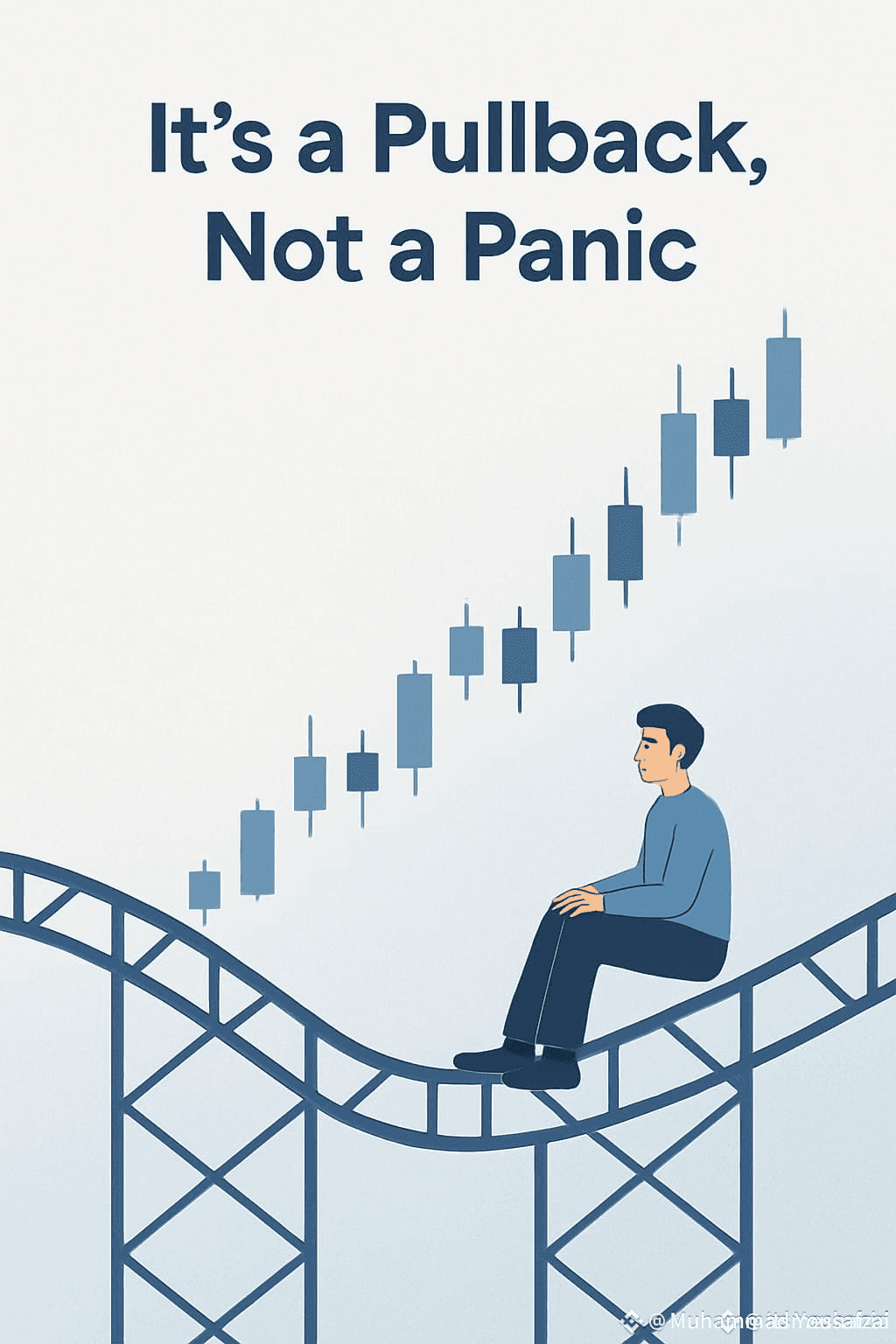What Is a Market Pullback?
A market pullback is a temporary decline—typically about 5% to 10%—in an asset’s price after a strong upward move. It's not a crash, but rather a pause or reset in the trend.
Binance
What Happens After a Pullback?
Consolidation: Prices may move sideways as the market stabilizes and buyers accumulate.
Binance
Follow-on Rally: If sentiment remains strong, buying the dip can trigger a resurgence, pushing prices past previous highs.
Binance
Why Do Pullbacks Happen?
Profit-taking: Traders often cash out after rallies, causing temporary reversals.
Binance
Market Sentiment: Short-term fear or uncertainty can drive prices down even amid a fundamentally healthy trend.
Strategic Buying: Many savvy traders view pullbacks as ideal entry points for future gains.
Expert Perspective: Binance’s View
Binance’s CEO Richard Teng also described recent crypto market turbulence as a “tactical pullback,” not a reversal. He emphasized that markets are experiencing a short-term adjustment rather than a fundamental shift.
ChainCatcher
Cointribune
He highlighted:
The crypto market’s historical ability to rebound from macroeconomic shocks (e.g. Fed policy changes).
ChainCatcher
Cointribune
Resilient fundamentals such as institutional demand and continued ETF interest.
Cointribune
Analysts from firms like Bernstein see corrections as strategic buying opportunities, with optimistic price forecasts ahead.
Cointribune
Summary Table
Concept Description
Market Pullback A short-term dip (usually 5–10%) after a strong rally — often healthy.
Post-Pullback Paths Consolidation or renewed upward movement if fundamentals are solid.
Triggers Profit-taking, sentiment shifts, macro news, leveraged trading effects.
Binance’s Take Tactical retreat, not a trend reversal; markets remain fundamentally sound.
What This Means for You
Stay Calm: Pullbacks are normal—even in bullish cycles.
Watch the Fundamentals: If underlying strength remains, dips could be buying opportunities.
Be Strategic: Consider methods like dollar-cost averaging or waiting for confirmations before entering positions.
Long-Term View Matters: As Binance suggests, corrections frequently precede strong rebounds.
If you’d like to explore specific indicators (like support levels, MACD, or Fibonacci retracements) or want comparisons to other pullbacks (e.g., in $BNB or $ETH ), I’d be happy to dive deeper.


